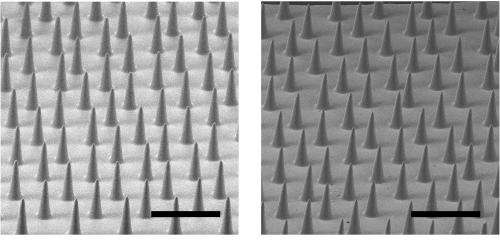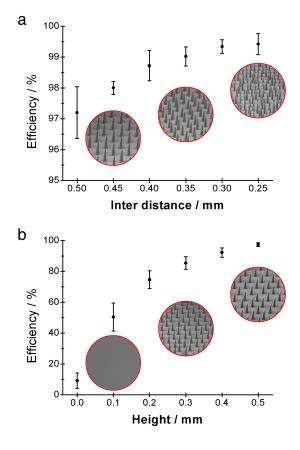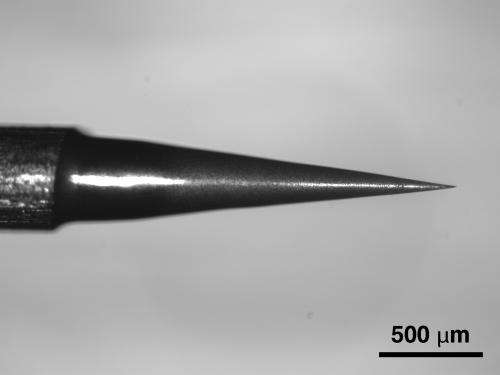August 7, 2013 report
Researchers remove oil from water using copper cones inspired by cactus spines (w/ Video)

(Phys.org) —A team of researchers working at the Chinese Academy of Sciences in Beijing, has developed a new way to remove oil from water—using a design inspired by nature. In their paper published in the journal Nature Communications, the team describes how an array of their cones could be used to help clean up oil spills.
Cactus plants have evolved a unique way to pull water out of the air—they have conic spines that jut out allowing water condensation to build up on them. But, because of the unique shape of the spines, the water surface tension causes the water droplets to be pulled towards the base of the spine where they are absorbed by pores in the plant. This process allows cactus plants to survive in extremely arid places. In this new effort, the researchers in China have created artificial spines out of copper and other synthetic materials that perform essentially the same function, only they pull oil along their conic form, while immersed in water.
The idea is based on prior research that has shown that when oil is spilled into the ocean, some of it floats on the surface, while some of it does not. Instead, it reacts with seawater and forms microscopic droplets of water that are too heavy to float. They wind up either suspended in the water, or falling to the ocean floor. To capture these tiny droplets, the team in China affixed multiple copper spines to a central structure—each (0.5 millimeter length) spine pulls oil out of the water whic travels along its length at a rate of 2 millimeters per second—creating a device that is capable of cleaning up the oil from spills that is typically missed during cleanup operations.

The researchers call their device a "cactus skin"—a flexible base with an array of spines protruding from its surface. To create oil-spill like conditions, they added oil to water than caused the formation of microscopic droplets by blasting it with ultrasonic sound waves. Tests run thus far have found the device capable of extracting up to 99 percent of the oil mixed into water and that the device works with virtually any type of oil.

More information: Structured cone arrays for continuous and effective collection of micron-sized oil droplets from water, Nature Communications 4, Article number: 2276 doi:10.1038/ncomms3276
Abstract
Environmental protection agencies and the petroleum industry require effective methods to separate micron-sized oil droplets from water. However, for most existing separation methods, phase separation occurs in the oil–water mixture. The remaining micron-scale oil droplets, which are not affected by phase separation, are difficult to handle with conventional methods on a large scale because of either a lack of separation ability or drawbacks in throughput capacity. Here we develop an oleophilic array of conical needle structures for the collection of micron-sized oil droplets, inspired by the collection of similar sized water droplets on conical cactus spines. Underwater, these structures mimic cacti and can capture micron-sized oil droplets and continuously transport them towards the base of the conical needles. Materials with this structure show obvious advantages in micron-sized oil collection with high continuity and high throughput.
Journal information: Nature Communications
© 2013 Phys.org



















